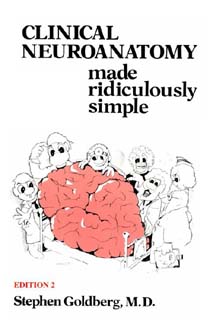

Constipation Constipation in Adults Constipation is difficult or infrequent bowel movements, hard stool, or a feeling that the rectum is not totally empty after a bowel movement (incomplete evacuation). Clinical Neuroanatomy Made Ridiculously Simple MedMaster. read more ) because the bladder is underactive. Clinical Neuroanatomy Made Ridiculously Simple by Stephen Goldberg Pages: 94 Publisher: -Edition: 1st. People who have incomplete emptying of the bladder may have urinary frequency or urinary incontinence. Other people have difficulty emptying the bladder ( urine retention Urinary Retention Urinary retention is inability to urinate or incomplete emptying of the bladder. read more ), often because the bladder is overactive. Incontinence can occur in both men and women at any age, but it is more common among women and older people, affecting about 30% of older women. High Yield Neuroanatomy is a more thorough but dryer version. format paperback title clinical neuroanatomy made ridiculously simple author goldberg stephen publisher medmaster publication date pages 95 binding paperback edition paperback cd rom re dimensions 6 00 wx 9 25 hx 0 25 d isbn. Some people pass urine involuntarily ( urinary incontinence Urinary Incontinence in Adults Urinary incontinence is involuntary loss of urine. Cognitive Neuroscience and Neuropathology Steven Laureys, Giulio Tononi. Clinical Neuroanatomy Made Ridiculously Simple can help with the highlights (hits a good portion of testable points) in a relatively painless way but won’t replace your course materials. Clinical Neuroanatomy Made Ridiculously Simple.

The topics covered include: basic anatomy, surface anatomy, clinical anatomy, anatomic clinical questions and answers.
#Clinical neuroanatomy made ridiculously simple figure 19 full
After eating, a person with an autonomic disorder may feel prematurely full or even vomit because the stomach empties very slowly (called gastroparesis). Clinical Physiology Made Ridiculously Simple Aims to provide accident and emergency specialists with a comprehensive resource for the practical, clinical and anatomic aspects of performing emergency diagnosis and procedures.


 0 kommentar(er)
0 kommentar(er)
